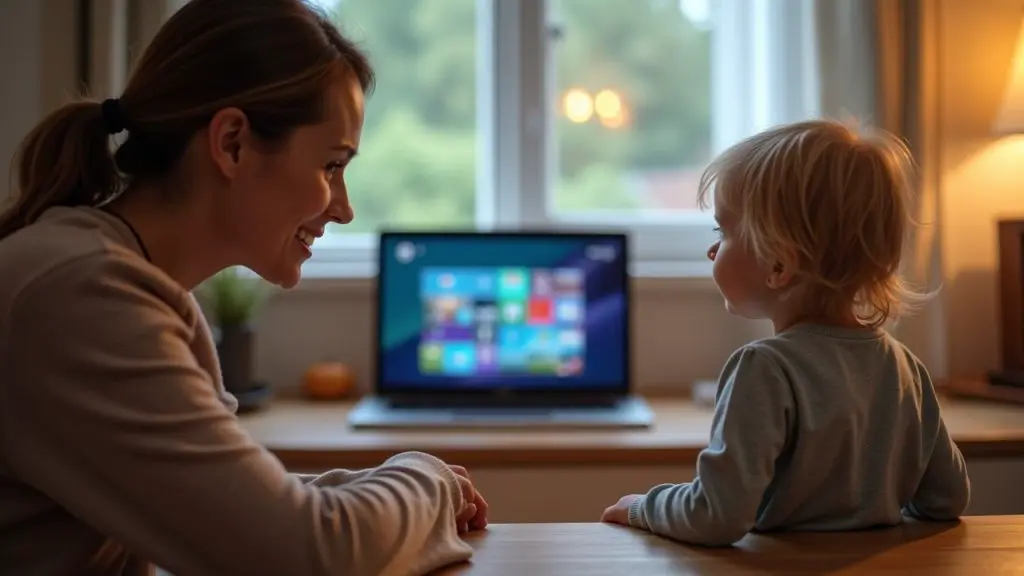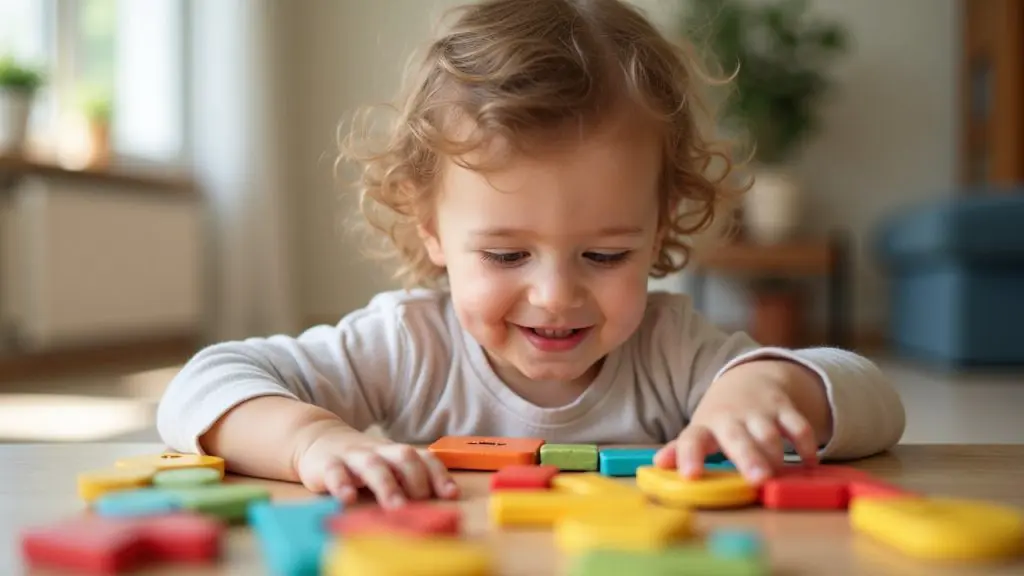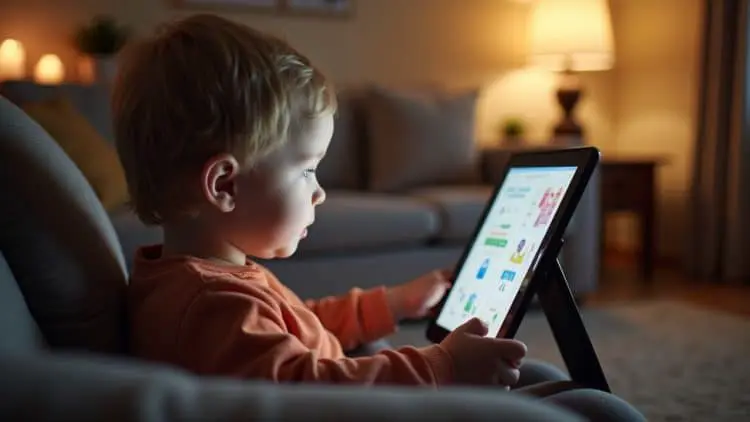Screens are everywhere—TVs, tablets, phones, laptops—and let’s face it, even toddlers know how to swipe before they can fully talk. Sometimes screen time gives you a much-needed break. Sometimes it’s educational. And sometimes it’s just… survival mode.
But as screens become a bigger part of everyday life, so do the questions. One that comes up again and again? Is this affecting my toddler’s eyes?
If you’ve ever worried about how screens might impact your little one’s developing vision, you’re not alone. In this post, we’ll break down the screen time effects on toddler eyes, what’s backed by experts, what to watch out for, and how to build screen-smart habits at home.
Let’s explore how to find a balance that works for both your toddler’s eyes—and your sanity.
Why Toddler Eyes Are Extra Sensitive to Screens
Toddlers’ eyes are still growing and adjusting to the world around them. Their visual system is developing rapidly in the first few years of life, and that means it’s more sensitive to strain or overstimulation.
Unlike adults, toddlers don’t always blink enough when staring at a screen. This can lead to dry eyes, fatigue, and difficulty focusing. Their shorter arms also mean screens are held much closer to their faces than what’s considered ideal for eye health.
That’s why screen time effects on toddler eyes are something pediatricians and eye specialists are paying closer attention to—especially as screen use increases at younger ages.
What the Experts Say About Screen Time for Toddlers
According to the American Academy of Pediatrics (AAP), toddlers between 18 and 24 months should have limited screen time, and only with high-quality, educational content that’s watched with a caregiver. For kids under 18 months, screen time (other than video chatting) is discouraged altogether.
Why the caution? Because research is still catching up with how long-term screen exposure affects developing eyes and brains. But here’s what we do know so far about the screen time effects on toddler eyes:
- Prolonged screen time can lead to digital eye strain
- Excessive close-up focus may increase risk of nearsightedness (myopia)
- Blue light exposure may interfere with sleep patterns
- Lack of outdoor time (replaced by screen use) can hinder visual development
These effects don’t happen overnight, and they vary between children—but it’s clear that moderation and mindful screen habits are key.
Signs Your Toddler May Be Experiencing Eye Strain
Your toddler can’t exactly say, “Mom, my eyes feel tired,” so it’s important to know the subtle signs that something might be off. If you’re worried about the screen time effects on toddler eyes, keep an eye out (pun intended) for:
- Squinting or rubbing eyes often
- Holding screens very close to the face
- Avoiding tasks that require visual focus (like puzzles or coloring)
- Watery or dry-looking eyes
- Increased irritability after screen time
- Seeming more tired or dazed than usual
If you notice any of these regularly, it may be time to scale back screen use and consult a pediatrician or eye specialist.

How Much Screen Time Is “Too Much”?
There’s no magic number that fits every child. But generally, experts recommend limiting screen time for toddlers to about 30 minutes to 1 hour per day, depending on age, and spreading it out into short sessions.
It’s not just about quantity, though—it’s about quality and balance. If your toddler spends time outside, interacts with people, plays freely, and gets good sleep, occasional screen use isn’t going to ruin their eyesight.
However, prolonged exposure without breaks is where we start to see more negative screen time effects on toddler eyes.
Practical Tips to Protect Toddler Eyes During Screen Time
Here’s the good news: You don’t have to ban screens completely. By making a few small adjustments, you can help protect your child’s eyes while still enjoying the occasional cartoon or learning app.
1. Follow the 20-20-20 Rule (Toddler Style)
Every 20 minutes, encourage your child to look at something 20 feet away for at least 20 seconds. This gives their eye muscles a break from close-up focus.
2. Keep Screens at Least 18-24 Inches Away
Try to place tablets and TVs at a safe distance, and avoid letting them hold phones too close. A tablet on a stand is often better than in-hand.
3. Adjust Lighting
Use screens in well-lit rooms to reduce glare and strain. Avoid watching in the dark or right before bed.
4. Limit Blue Light Before Sleep
Screens right before bedtime can mess with melatonin and disrupt sleep. Aim for a screen-free wind-down at least 30–60 minutes before bed.
5. Prioritize Outdoor Play
Natural light and distance vision help eye development. Even 1–2 hours outside per day can help reduce risks of nearsightedness.
These small tweaks can make a big difference in minimizing the screen time effects on toddler eyes.

High-Quality Alternatives to Screen Time
Need a break but want to avoid another episode of Cocomelon? You’re not alone. Sometimes you just need a moment to cook dinner, answer an email, or sit down with a warm cup of coffee before it turns cold (again). The good news is that there are plenty of engaging, screen-free activities that toddlers genuinely enjoy—activities that support their development and give their eyes a much-needed rest.
Here are some easy, fun, and low-prep alternatives that offer a healthy pause from screens:
- Sensory Bins: Fill a plastic tub with dry rice, water beads, oats, or sand, and throw in a few measuring cups, spoons, or small toys. Sensory bins are magical—toddlers can scoop, pour, dig, and explore for surprising stretches of time. It engages their hands, brains, and senses without relying on a screen for stimulation.
- Reusable Sticker Books: These books are perfect for practicing fine motor skills, hand-eye coordination, and storytelling. Because they’re reusable, your toddler can peel and stick to their heart’s content without burning through a whole pack in 10 minutes. Bonus: they’re mess-free and travel well.
- Simple Puzzles or Sorting Games: Wooden puzzles, stacking cups, shape sorters, or even DIY sorting games with colored blocks can entertain and challenge your toddler’s brain. They help build cognitive and problem-solving skills—and they give you a bit of peace and quiet in return.
- Audio Books or Toddler Music Playlists: Swap the screen for sound. Audio books can hold a toddler’s attention in a surprising way, especially when paired with a cozy reading corner or some cuddly stuffed animals. Add in some kid-friendly music, and you’ve got a dance party or calming background rhythm depending on the mood.
- Coloring with Chunky Crayons: Good old-fashioned coloring is still a winner. Offer some thick crayons and big coloring pages—or let them scribble freely on blank paper. It’s a creative outlet that strengthens fine motor skills while keeping their hands (and eyes) busy.
All of these activities are simple to set up, require little supervision, and can be rotated throughout the week. They support development, encourage independence, and best of all—they give your toddler’s eyes a well-earned break from screens.
Remember, it’s not about eliminating screens altogether. It’s about building a toolkit of alternatives so screen time becomes one of many tools—not the only one. A balanced approach leads to better habits, healthier eyes, and fewer screen-time battles down the road.

When Should You See an Eye Doctor?
While screen-time guidelines and visual health tips are helpful, nothing replaces a professional eye exam when it comes to making sure your toddler’s vision is developing properly. Many parents assume that if their child isn’t squinting or bumping into things, their eyes must be fine—but toddlers are great at adapting, and vision issues can often go unnoticed until they start affecting learning or behavior.
Most pediatricians include basic vision screenings during regular well-child visits, but these checks are limited. A pediatric optometrist or ophthalmologist can provide a much more detailed evaluation of your toddler’s eye health.
So, when should you consider booking a full eye exam? Here are a few key indicators:
- If Your Toddler Was Born Prematurely: Premature birth increases the risk of certain eye conditions, including vision development delays and retinal issues. Even if your child seems fine, early screening is recommended.
- If There’s a Family History of Eye Issues: Conditions like strabismus (crossed eyes), amblyopia (lazy eye), or severe nearsightedness often run in families. If you or your partner needed glasses early, it’s worth getting your toddler checked sooner than later.
- If You Notice Any Signs of Vision Problems: Squinting, frequent eye rubbing, excessive tearing, poor eye contact, holding books or screens too close, or avoiding activities that require focus (like stacking blocks) can all be red flags. Even behavioral changes—like frustration during play or short attention spans—can be tied to unrecognized vision issues.
- If Your Toddler Uses Screens Frequently: If screens are part of your everyday routine, even in short bursts, it’s wise to keep a closer eye on your child’s visual development. Prolonged screen time can sometimes mask or even contribute to issues like eye strain or early myopia, especially if not balanced with outdoor play.
If you’re ever unsure, trust your instincts. You know your child best. If something feels off or you just want peace of mind, don’t hesitate to reach out to a pediatric eye specialist. Catching issues early means more effective treatment—and one less thing to worry about in the long run.
After all, protecting your child’s vision is just another part of nurturing their overall health. Keeping tabs on the screen time effects on toddler eyes is a smart, proactive step—one that ensures those curious little eyes keep exploring the world clearly and comfortably.
What About Blue Light Glasses for Toddlers?
Blue light glasses are a trendy solution, but for toddlers, the evidence is still mixed. Most pediatric experts agree that limiting screen time and using good lighting habits are far more effective than relying on glasses.
Plus, let’s be honest—how long will your toddler really keep glasses on?
If you’re already taking steps to reduce screen exposure and protect their viewing habits, blue light glasses aren’t necessary for most toddlers.
A Balanced Approach Is the Best Approach
In today’s world, avoiding screens completely is nearly impossible. And that’s okay. Whether it’s a video call with Grandma, a learning app, or just 15 peaceful minutes while you make dinner—screens can have a place in your life.
The key is to be intentional. Use screens in moderation, keep them at a safe distance, and balance them with active play, outdoor time, and lots of real-life interaction.
By being mindful, you can reduce the screen time effects on toddler eyes while still using technology in a way that works for your family.
So no, you don’t need to feel guilty for that episode of Bluey. Just be aware, stay observant, and keep protecting those curious little eyes.
If you want to read more articles from out Health section, just click here.



